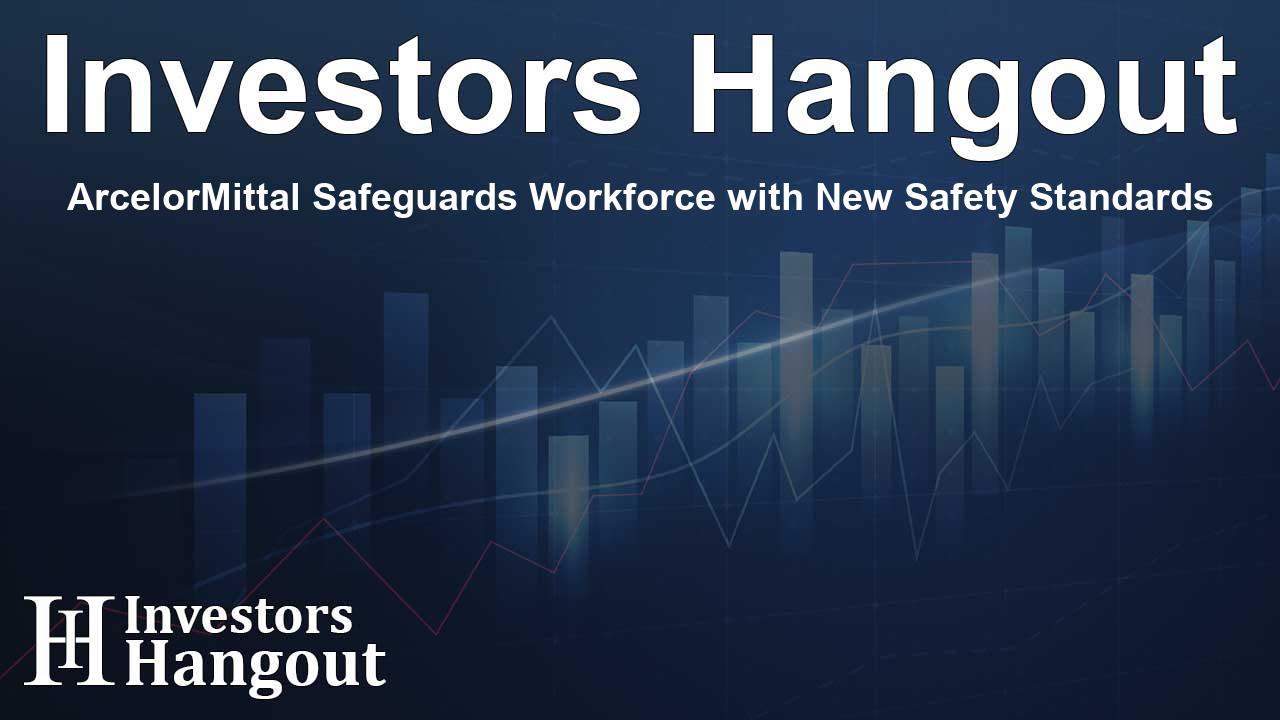ArcelorMittal Safeguards Workforce with New Safety Standards

Introduction to ArcelorMittal's Safety Audit
ArcelorMittal has recently shared crucial insights from a detailed workplace safety audit conducted by dss+. This assessment was initiated with a strong drive to elevate safety performance across the global organization. Given the increasing necessity for robust safety practices, this comprehensive audit serves as a pivotal step in ensuring the welfare of all employees within the Group.
Scope of the Audit
The audit process spanned nine months and examined safety practices at various levels and locations across the company, focusing on three key areas:
1. Standards for preventing fatalities associated with critical occupational risks including working at heights, vehicle operation, and energy isolation.
2. Management of process safety, specifically targeting the Group's highest risk assets.
3. Comprehensive evaluations of health, safety systems, processes, governance, assurance measures, and data management practices.
Key Findings and Challenges
Aditya Mittal, the Chief Executive Officer of ArcelorMittal, emphasized the importance of evaluating safety performance to identify areas needing improvement. Despite having established safety policies, the audit revealed a significant challenge: embedding a unified 'one safety culture' throughout the organization. The feedback indicated variability in safety practices, where some departments excel while others lag behind.
Creating a Unified Safety Culture
Mittal pointed out that achieving a consistent culture of safety is challenging but essential for enhancing overall performance across all business units. The goal is to elevate lower-performing segments to meet the standards of the top performers, establishing rigorous governance and assurance standards as the foundation.
Implementing the Recommendations
The audit provided a framework for ArcelorMittal to enhance its safety protocols. As part of its commitment to implementing these recommendations, the company is focusing on several strategic areas:
1. Improving risk identification and governance to ensure detailed understanding of operational risks.
2. Strengthening the health and safety assurance models across business units to promote rigorous oversight and implementation of safety protocols.
3. Instilling a safety-first mentality through coaching and mentoring, thereby reinforcing existing safety training programs.
Focus on Contractor Safety
Recognizing the fluctuating number of contractors working within ArcelorMittal's projects, the audit emphasizes the need for standardized safety management across contractor operations. This includes ensuring that contracted employees adhere to the same high safety standards as full-time staff.
Process Safety Management Best Practices
One of the audit's significant recommendations was the establishment of a unified Process Safety Management (PSM) framework. This involves embracing industry-specific best practices and facilitating a comprehensive approach to managing process safety-related risks.
Communicating Progress
The commitment to safety extends to clear communication with stakeholders about progress towards achieving zero fatalities and serious injuries in the workplace. Regular updates will be provided as ArcelorMittal works towards implementing the recommendations from the audit, ensuring transparency and accountability.
Conclusion
ArcelorMittal's enhanced commitment to safety underscores its position as a leader in the global steel and mining industry. By embracing these strategic changes and building a solid safety culture, ArcelorMittal aims not only to safeguard its workforce but to establish a benchmark for safety practices across the industry.
Frequently Asked Questions
What prompted the safety audit at ArcelorMittal?
The audit was initiated to strengthen safety performance across the Group and identify areas for improvement within the operational framework.
What were the main findings of the safety audit?
Key findings included variability in the implementation of safety practices across business units, highlighting the need for a unified culture of safety.
How will ArcelorMittal implement the audit's recommendations?
The company plans to strengthen governance, enhance health & safety assurance, and focus on instilling safety values throughout its operations.
What is the significance of the Process Safety Management framework?
The PSM framework aims to standardize processes across the Group, ensuring consistent implementation of safety best practices and risk management protocols.
How is ArcelorMittal addressing contractor safety issues?
The company is developing standardized safety management protocols to ensure all contractors meet the established safety standards.
About The Author
Contact Owen Jenkins privately here. Or send an email with ATTN: Owen Jenkins as the subject to contact@investorshangout.com.
About Investors Hangout
Investors Hangout is a leading online stock forum for financial discussion and learning, offering a wide range of free tools and resources. It draws in traders of all levels, who exchange market knowledge, investigate trading tactics, and keep an eye on industry developments in real time. Featuring financial articles, stock message boards, quotes, charts, company profiles, and live news updates. Through cooperative learning and a wealth of informational resources, it helps users from novices creating their first portfolios to experts honing their techniques. Join Investors Hangout today: https://investorshangout.com/
The content of this article is based on factual, publicly available information and does not represent legal, financial, or investment advice. Investors Hangout does not offer financial advice, and the author is not a licensed financial advisor. Consult a qualified advisor before making any financial or investment decisions based on this article. This article should not be considered advice to purchase, sell, or hold any securities or other investments. If any of the material provided here is inaccurate, please contact us for corrections.
